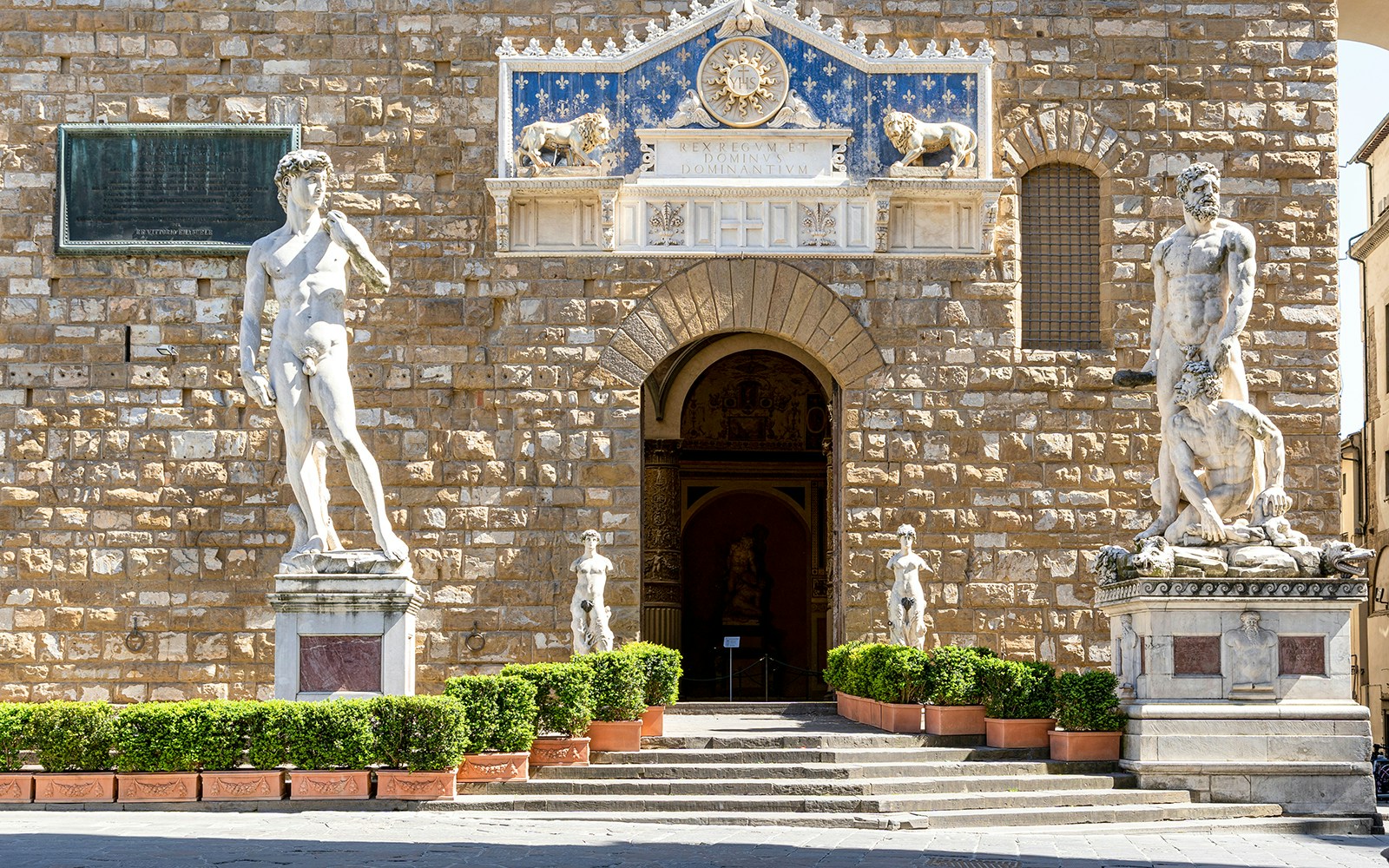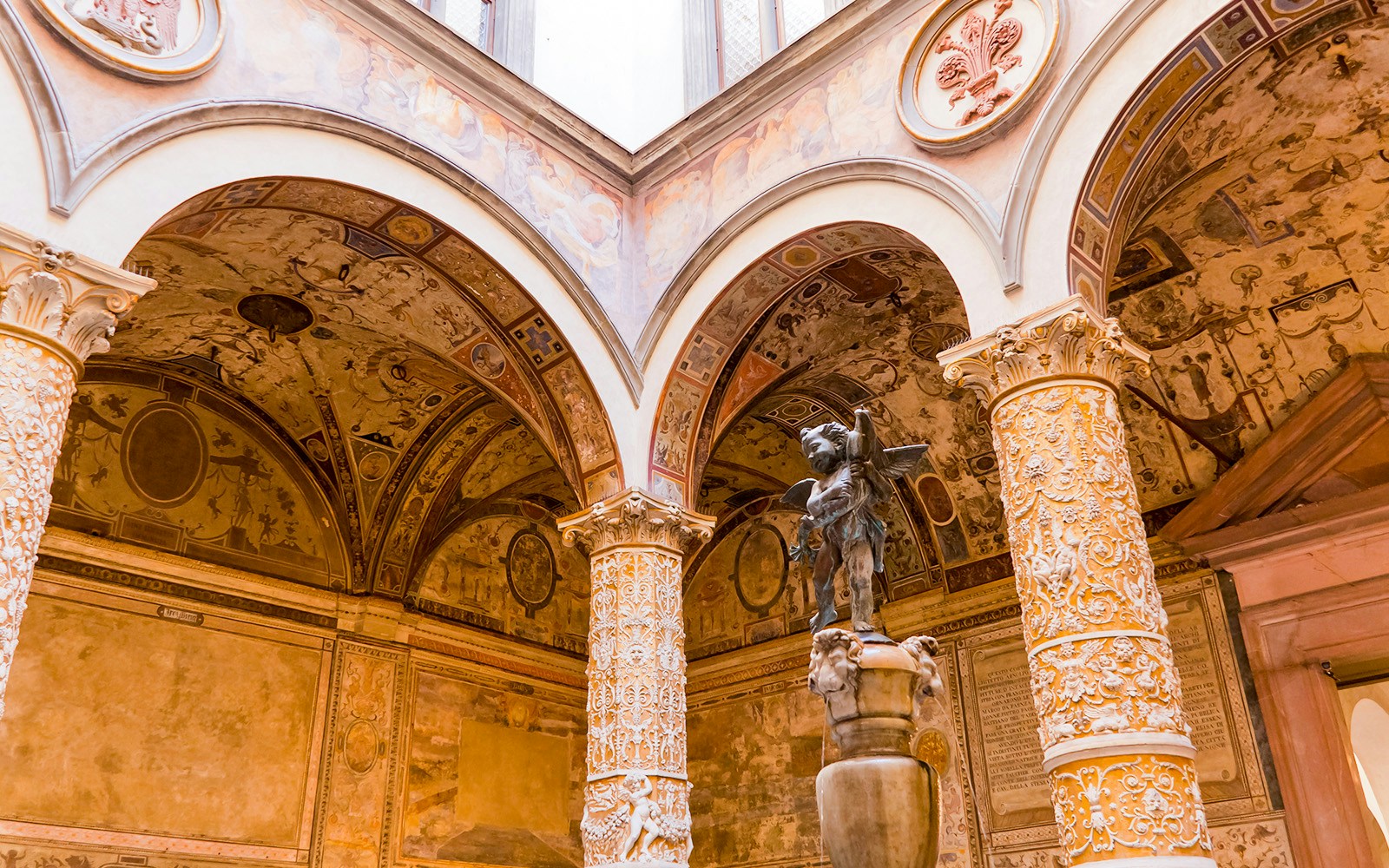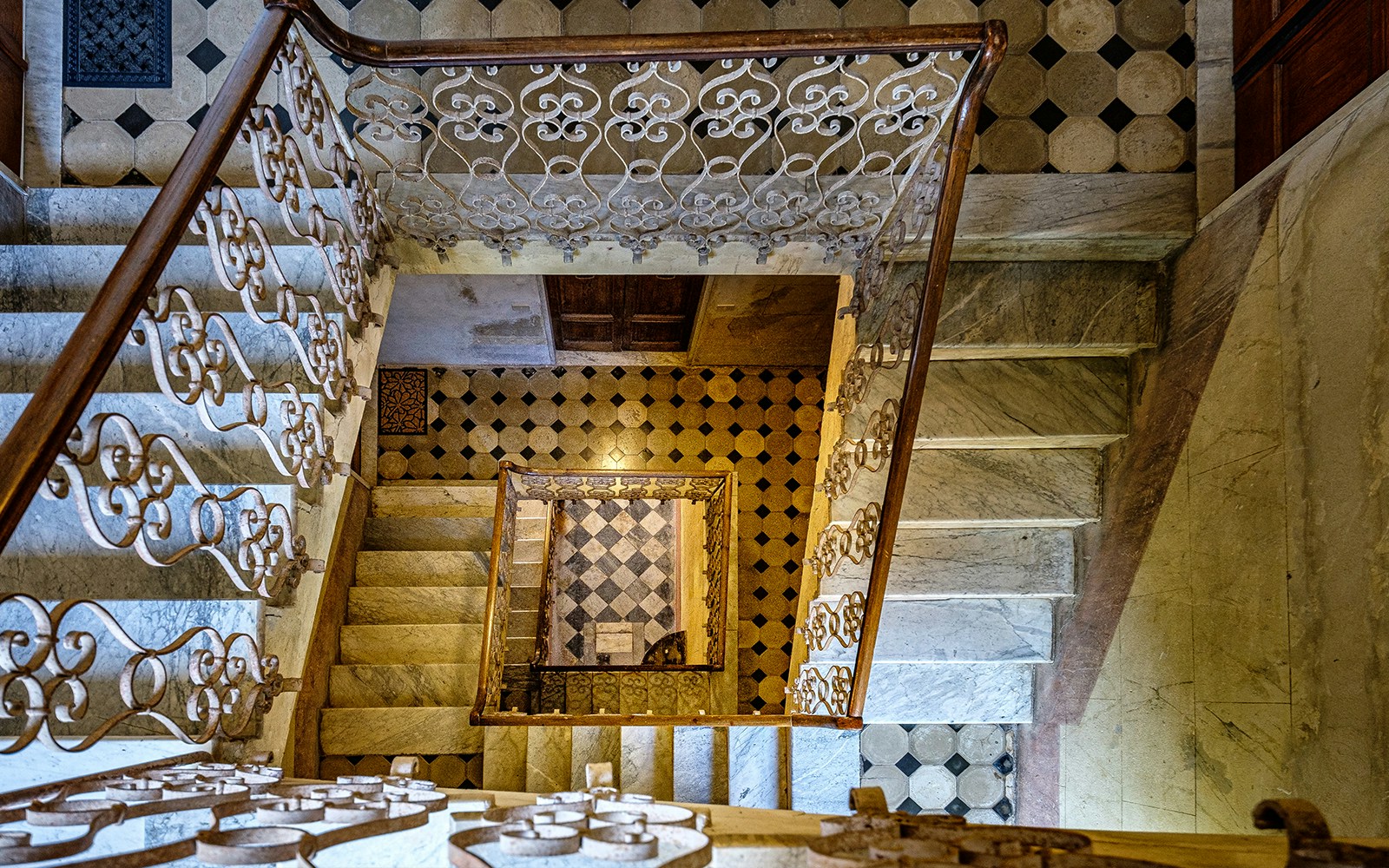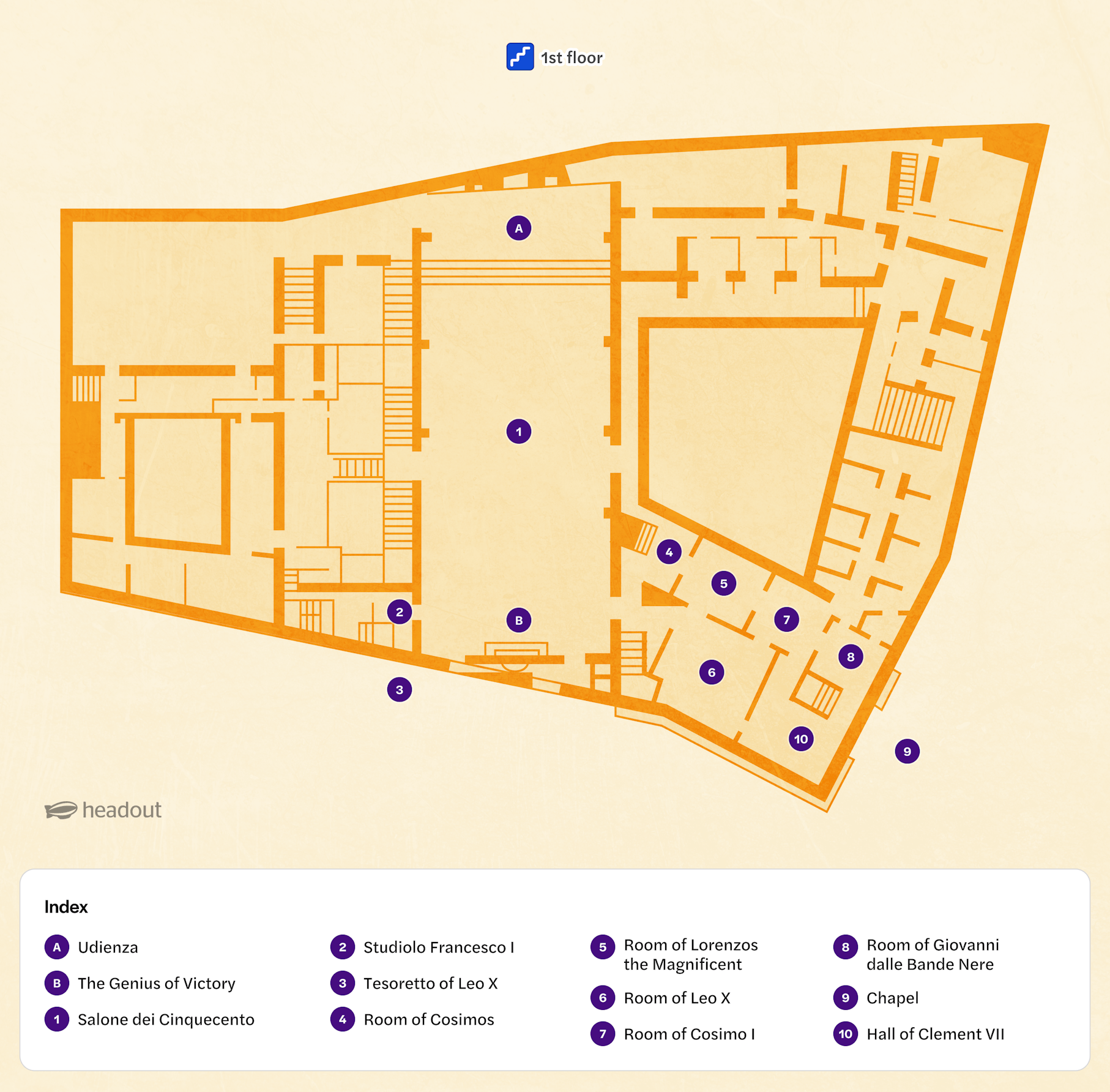Ground floor
The main entrance of Palazzo Vecchio
is flanked by lifesize statues of David by Michelangelo, and Hercules and Cacus by Bandinelli.
Enter through the First Courtyard
Wander along the stunning loggia, a covered gallery with gilded arches that overlooks this open-air courtyard redesigned by Michelozzo in 1453.
At its center stands a porphyry fountain by Battista del Tadda
crowned by a replica of Verrocchio’s Putto with Dolphin.
White and gilded stucco decorations and frescoes of Habsburg cities
commemorate the marriage of Francesco I de’ Medici and Joanna of Austria.
The Second Courtyard
known as the Courtyard of the Customs, was added in 1494. It originally functioned as the city’s customs office.
The Monumental Staircase
leads you up to the next levels of Palazzo Vecchio. If you experience mobility issues, take the lift from the Cortile della Dogana instead.
Below the palace lies the ruins of an ancient Roman theater
dating back to the 1st century BC city of Florentia. Palazzo Vecchio's construction in the 14th century occurred directly over some parts of it.















